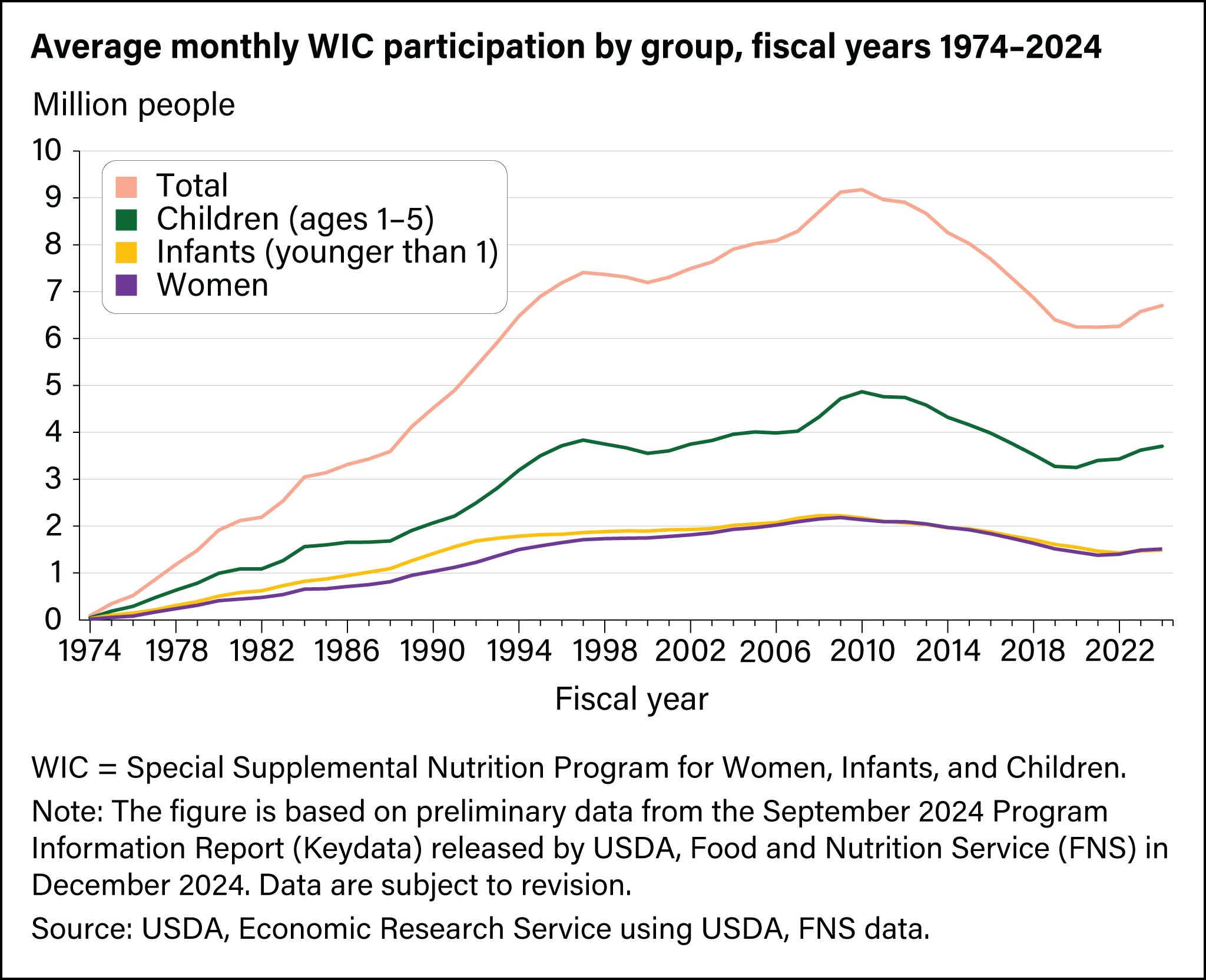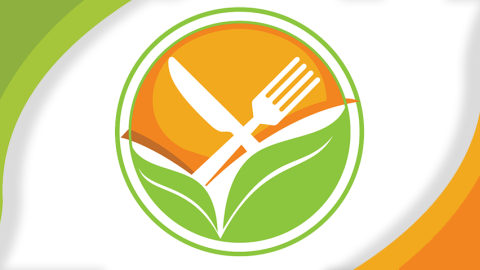The Special Supplemental Nutrition Program for Women, Infants, and Children (WIC) serves to safeguard the health of low-income pregnant and postpartum women, infants, and children younger than 5 years who are at nutritional risk. WIC served about 6.7 million participants each month in fiscal year 2024, including an estimated 41 percent of all infants in the United States. Federal program costs for WIC totaled $7.2 billion in fiscal year 2024.

Download chart data in Excel format
USDA’s Economic Research Service (ERS) conducts and funds studies of the WIC program and other USDA domestic food and nutrition assistance programs.
The WIC Program: Background, Trends, and Economic Issues, 2024 Edition report explains how the WIC program works, examines program trends, describes some of the impacts of WIC, and discusses some of the major economic issues facing the program.
The Food and Nutrition Assistance Landscape: Fiscal Year 2024 Annual Report documents historical trends in WIC spending and participation as well as other USDA food and nutrition assistance programs.
About WIC
WIC participants receive:
- Nutritious foods to supplement diets,
- Information on healthy eating, including breastfeeding promotion and support, and
- Referrals to health care and other social services.
WIC is administered at the Federal level by USDA's Food and Nutrition Service (FNS) and is administered locally by 88 WIC State agencies. These agencies cover 50 States, the District of Columbia, 32 Indian Tribal Organizations, American Samoa, Guam, the Commonwealth Islands of the Northern Marianas, Puerto Rico, and the U.S. Virgin Islands.
Congress authorizes a specific amount of funding annually for WIC operations and has funded WIC each year since the late 1990s to serve all eligible applicants. To qualify for WIC, an applicant must be:
- A pregnant woman,
- A postpartum woman (up to 1 year if breastfeeding or 6 months if not breastfeeding),
- An infant, or
- A child younger than 5 years.
WIC applicants must have a family income at or below 185 percent of the U.S. poverty level or demonstrate income eligibility through participation in other means-tested programs such as the Supplemental Nutrition Assistance Program (SNAP), Medicaid, or Temporary Assistance for Needy Families (TANF). Applicants must also be at nutritional risk, as determined by a WIC-competent professional authority through a comprehensive nutrition and breastfeeding assessment.
WIC provides seven food packages designed to meet the nutritional needs of different categories of participants. All packages include foods that are high in nutrients determined by nutritional research to be lacking in the WIC target population.
State WIC agencies use cost-containment efforts, such as infant formula rebates, to ensure competitive pricing for WIC foods, while maintaining Federal nutrition standards and quantities. WIC State agencies use a single-source, competitively bid system where State agencies receive rebates from manufacturers for infant formula purchased by participants with WIC benefits at retail stores. In fiscal year 2024, infant formula rebates totaled about $1.6 billion. This number amounts to the cost of providing benefits to an average of 1.2 million participants each month or slightly less than one-fifth (18.6 percent) of the monthly WIC caseload.
All values and figures are based on data as of December 2024 and are subject to revision.
Find additional information about WIC at the FNS website:
- Eligibility guidelines
- How to apply for the program
- Program benefits and services, such as breastfeeding promotion and support, nutrition services, and food packages
- Program data
- Research reports
- Laws and regulations
- State agency contact information
- The Farmers' Market Nutrition Program
Related information is available from the following resources:
- United States General Accounting Office (GAO)—GAO has conducted numerous studies on WIC. Search for GAO's WIC-related reports.
- National Academies Press website—additional reports on WIC are available.
- USDA's Center for Nutrition Policy and Promotion (CNPP) provides information on dietary guidelines, ChooseMyPlate, and the Healthy Eating Index.



